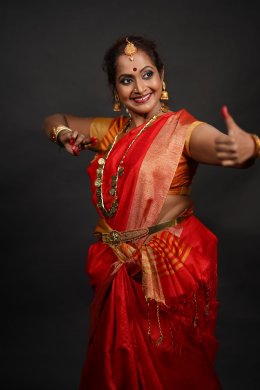The Kakatiyas, the second major dynasty of the Andhra region after the Satavahanas, were ardent patrons of art. Dealing with the classical and the regional dance forms of the Kakatiya period is the 13th century treatise Nrtta Ratnavali written by Jayasenapati, who surprisingly was the commander-in-chief of the elephant corps (gajasadhanika and senapati as the author himself puts it) serving ruler Ganapati Deva (1198-1262), between whom and the author existed an intimate bond with Jayappa becoming his brother-in-law. It was 'Ganapati Bhupala', who noting the talent and loyalty of young Jayana as he is referred to, put him under the right tutelage to be taught fine arts! And significantly the thousand pillared 13th century Ramappa Temple at Palampet (now declared a world heritage monument) near Warangal, the capital of the Kakatiyas built out of special floating bricks was by the then Chief of Army and Minister of Ganapati Deva.
Its extensive inscriptional and sculptural evidence pointing to the dance forms existing in this region inspired Jayappa while writing Nrtta Ratnavali. This would seem to point to an era when dance was a popular art form attracting people from all disciplines - not excluding the army! Jayappa's deep respect for Bharata and the Natya Sastra are reflected in the starting chapters on classical dance. In fact, he mentions that were Bharata to come back and reflect upon what he, Senapati had written, he would be very pleased at how completely faithful he, Jayana had been to Bharata's Natya Sastra! The later chapters deal with Desi or regional dances and here one sees the influence of Sarangadeva who belonged to about the same period, and is the author of the Sangeeta Ratnakara which also dealt with the Desi forms.
Read more in the site

No comments:
Post a Comment